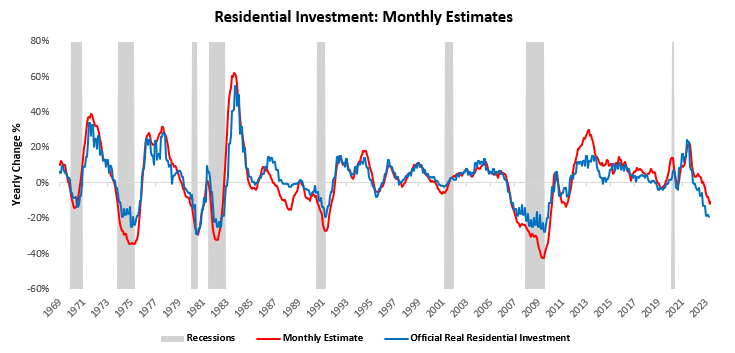Over this week, we will migrate all our publishing to our new website. Please make sure to subscribe below here if you haven’t already, as we will be transferring all our mailing lists to the new website. You can check it out here.
Welcome to The Observatory. The Observatory is how we at Prometheus monitor the evolution of the economy and financial markets in real time. The insights provided here are slivers of our research process that are integrated algorithmically into our systems to create rules-based portfolios. We also just released our latest Month In Macro note, which over 45 pages, explains our current assessment of economic and market conditions. You can read it here:
Today, we assess the latest information coming from the residential real estate sector. The latest information has shown a marginal improvement in our tracking of real residential investment within a broader contraction. At best, we currently estimate that real residential investment has increased by approximately 0.8% over the last quarter. Overall, the data show sequential improvement within cyclical weakness. Let’s dive in.
The latest data for May showed housing permits increased by 5.22%, housing starts increased by 21.72%, and housing completions increased by 9.52%. Below, we show the current levels for the same:
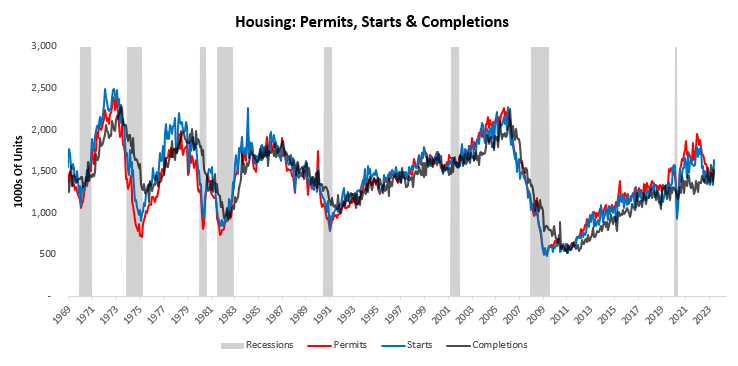
Zooming into the data, housing permits increased by 5.22%, surprising consensus expectations of -0.35%. Below, we show the sequential evolution of the data, along with the smoothed one-quarter change in the most recent data. We provide the smoothed version as monthly housing data contain significant noise.
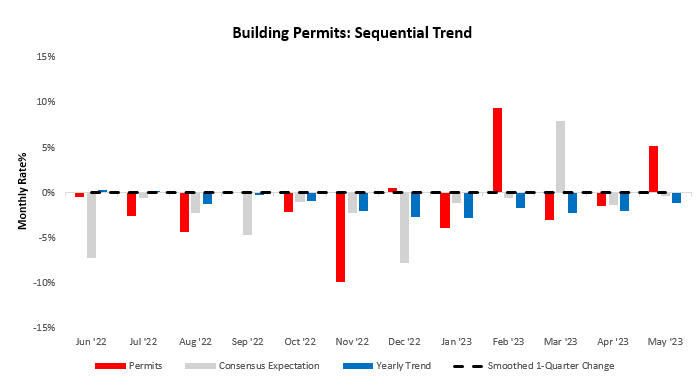
For further context, we zoom out to show the contributions from single-family homes (-136), two-family homes (-8), and multi-family homes (-73) to the fall (-217) in total permits over the last year:
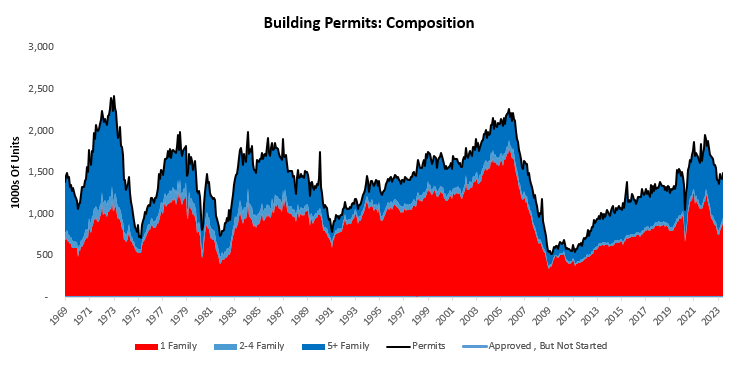
Consistent with the permits data, housing starts data showed starts increased by 21.72%, surprising consensus expectations of 0%. Below, we show the sequential evolution of the data, along with the smoothed one-quarter change in the most recent data. We provide the smoothed version as monthly housing data contain significant noise.
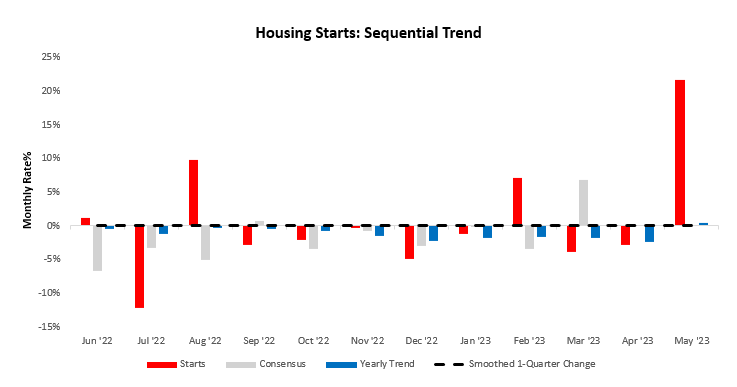
To illustrate the bigger picture, we show the contributions from single-family homes (156), two-family homes (-19), and multi-family homes (177) to the rise (88) in total starts over the last year:
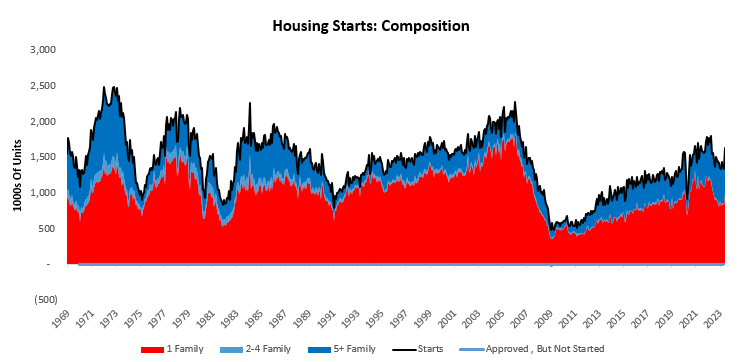
Last, in our sequential analysis, we turn to housing completions data, which showed completions increase by 9.52%. Below, we show the sequential evolution of the data, along with the smoothed one-quarter change in the most recent data. We provide the smoothed version as monthly housing data contain significant noise.
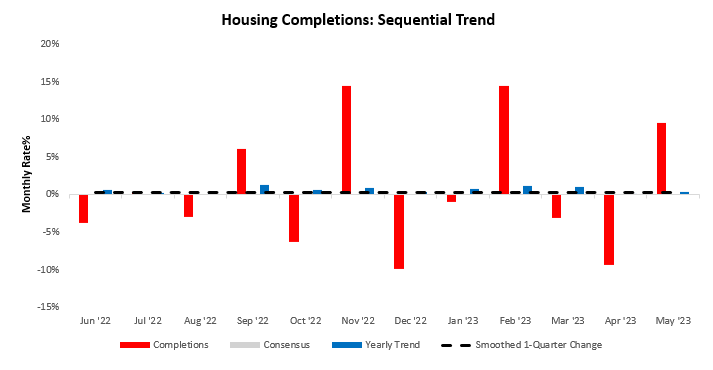
We show the contributions from single-family homes (38), two-family homes (11), and multi-family homes (95) to the rise (72) in total completions over the last year:
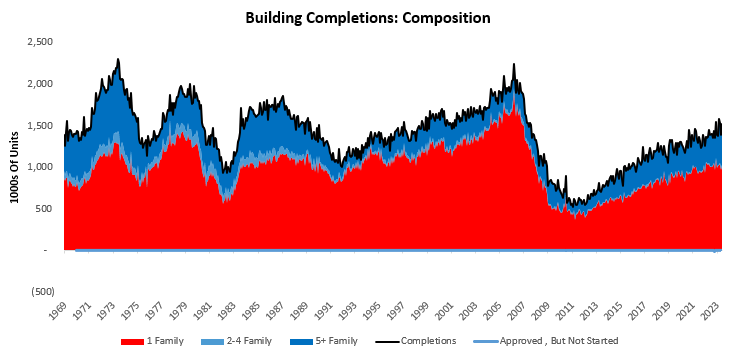
To get a better sense of where we are in the housing cycle, we examine how many construction projects have been approved but not yet started. According to the latest data, 19% of projects are yet to begin construction. Looking through history, housing-led recessions usually begin when this measure of construction slack is around 15% suggesting that we are within the ballpark of a recession.
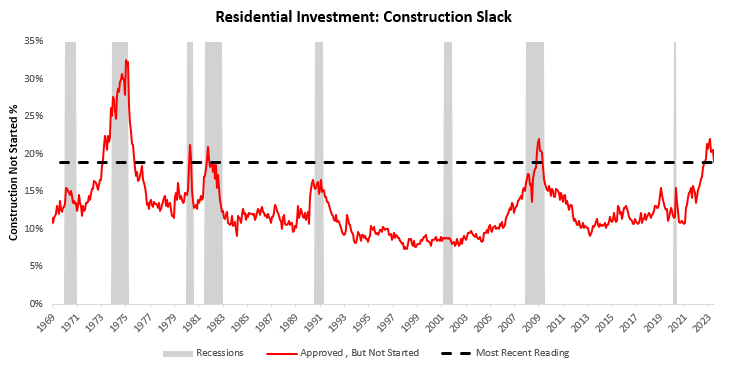
We conclude our sequential analysis by examining another measure of housing weakness, i.e., permit slowdowns- which measures how much building permits have fallen from their cycle highs. Large drops in permits bode ill for the broader residential investment complex & GDP. The latest data shows that building permits are off their cycle highs by -35%. Typically, housing-led recessions usually begin when this measure of cyclical weakness is around -35% suggesting that we are within the ballpark of a recession.
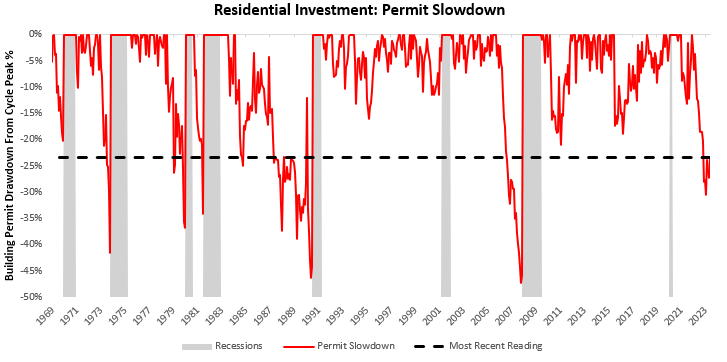
Next, we turn to the most recent data coming from mortgage applications. The latest data shows a sequential improvement in our weekly tracking of mortgage applications. Our latest estimate suggests downward pressure on mortgage borrowing and residential investment. Our latest estimates show mortgage applications down by -40.03% compared to one year prior. We present this information below:
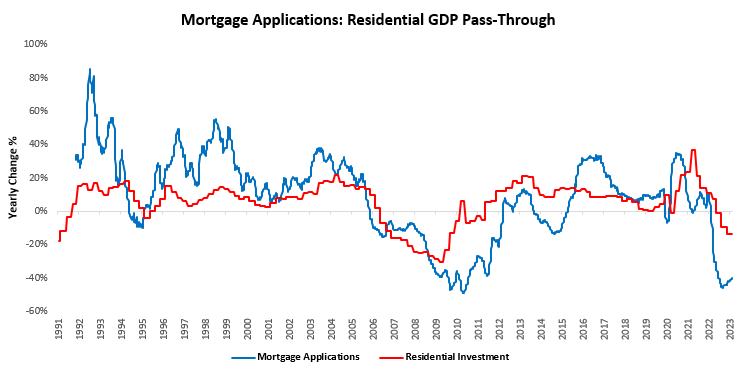
To assess the borrowing conditions driving these changes in mortgage applications, we turn to mortgage spreads. According to our measures, mortgage spreads are rising. Spreads have begun to rise since February 2022. Since then, the 30-year mortgage yield relative to 10-year Treasury yields has increased by 1.29%. Below, we present the 30-Year Mortgages relative to 10 & 30-Year Treasuries:
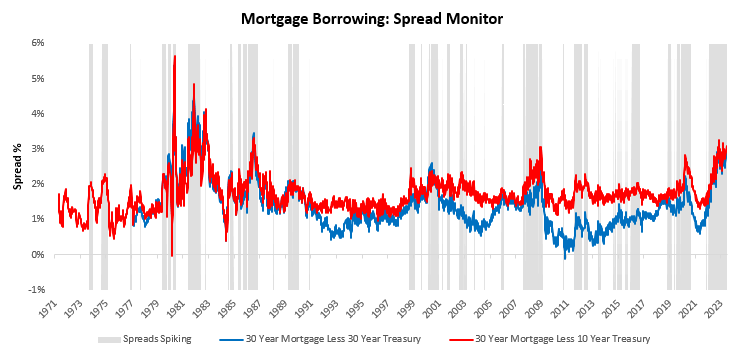
The combination of these various factors leads to a picture where our estimates of residential investment have sequentially improved, with the potential for a very modest one-quarter expansionary reading. While we are seeing this sequential improvement, our estimates remain depressed versus one year prior, i.e., residential investment remains weak:
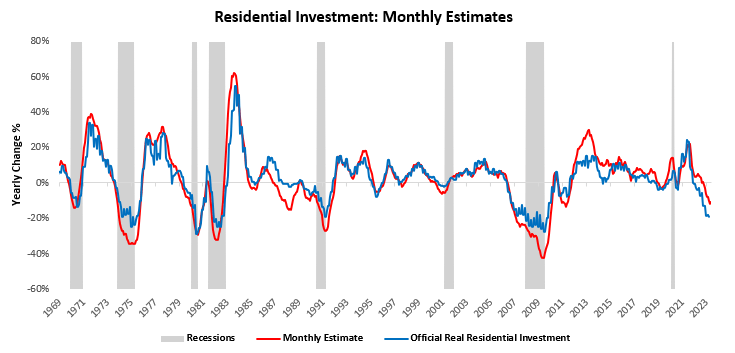
We see some of these marginal improvements priced into homebuilder stocks, which are most exposed to these improvements:
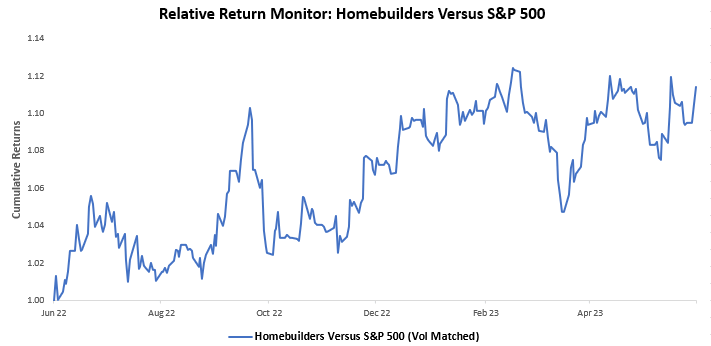
And much more modestly in MBS relative to Treasuries:
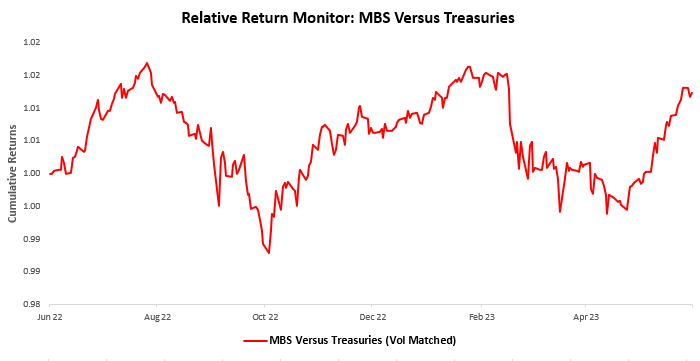
Whether this outperformance can continue largely depends on the ability of the consumer to continue to leverage current income growth into rising mortgage rates. At the same time, there remains room for residential construction to improve as some degree of building slack slows. Overall, our expectation is that the pass-through of higher rates will prevail over the course of the cycle. In the meantime, our trend signals continue to flag XHB as a potential long position and MBB as a potential short:
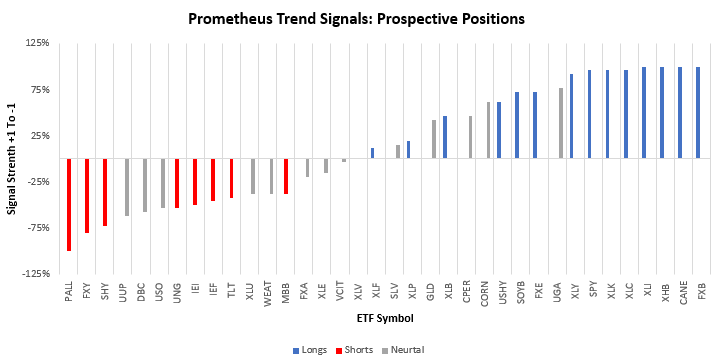
Until next time.

